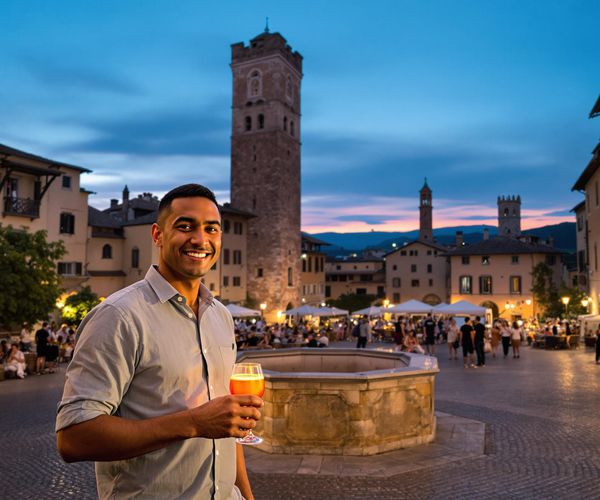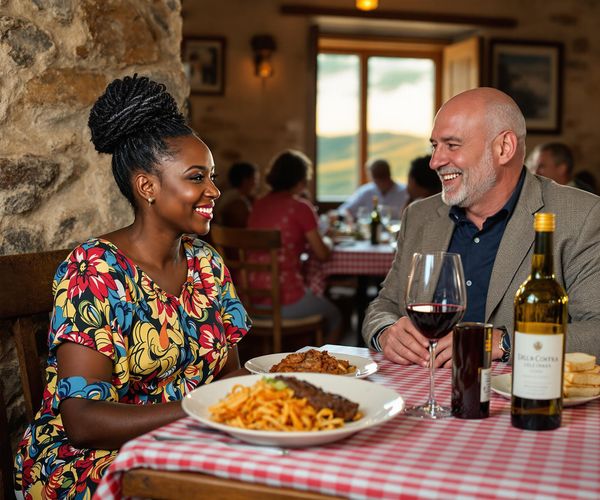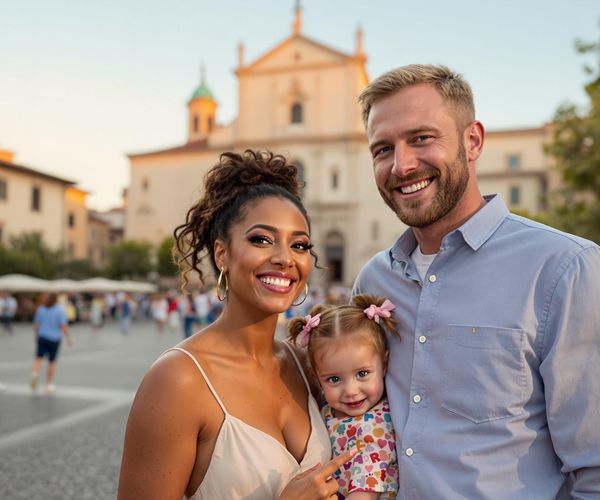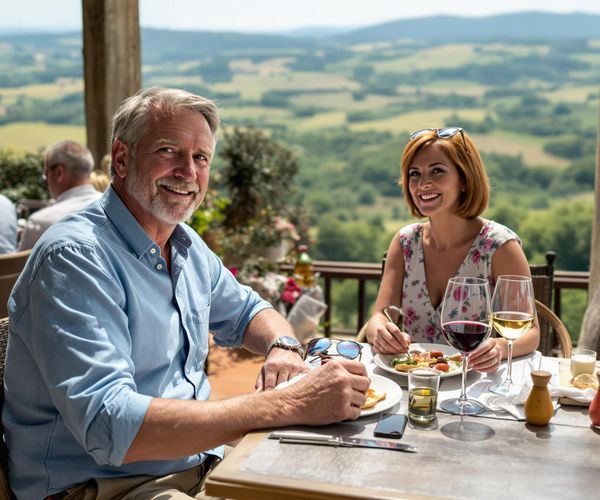
Siena: The Jewel of Tuscany
Experience the medieval charm and rich cultural heritage of Siena, a captivating city in Tuscany known for its stunning architecture, historic sites, and delectable cuisine.
Siena, a city in the heart of Tuscany, Italy, is a treasure trove of medieval architecture, vibrant culture, and rich history. This charming city is known for its stunning Piazza del Campo, a shell-shaped square that hosts the famous Palio di Siena horse race twice a year. As you stroll through the narrow, winding streets, you'll be transported back in time, surrounded by beautifully preserved Gothic buildings and centuries-old churches. One of Siena's most iconic landmarks is the Duomo di Siena, a magnificent cathedral that boasts an intricate facade and a stunning interior filled with masterpieces by renowned artists such as Michelangelo and Donatello. The city's museums, including the Museo Civico and Santa Maria della Scala, offer fascinating insights into Siena's past and its artistic heritage. Siena is also a culinary paradise, with a plethora of trattorias and osterias serving up delicious Tuscan cuisine. From hearty ribollita soup to the city's famous panforte, there's something to tantalize every taste bud. And don't forget to sample the local wines, particularly the robust Chianti produced in the surrounding vineyards. Whether you're exploring the historic sites, indulging in the local flavors, or simply soaking in the atmosphere, Siena promises an unforgettable experience.
Local tips in Siena
- Visit during the Palio di Siena for an unforgettable experience, but book accommodations well in advance.
- Wear comfortable shoes, as the city is best explored on foot and the streets can be quite steep.
- Head to the Torre del Mangia for a panoramic view of the city and the surrounding Tuscan countryside.
- Try the local sweets, such as ricciarelli and panforte, from a traditional pasticceria.
- Take a day trip to the nearby Chianti region for wine tasting and picturesque vineyards.
Siena: The Jewel of Tuscany
Siena, a city in the heart of Tuscany, Italy, is a treasure trove of medieval architecture, vibrant culture, and rich history. This charming city is known for its stunning Piazza del Campo, a shell-shaped square that hosts the famous Palio di Siena horse race twice a year. As you stroll through the narrow, winding streets, you'll be transported back in time, surrounded by beautifully preserved Gothic buildings and centuries-old churches. One of Siena's most iconic landmarks is the Duomo di Siena, a magnificent cathedral that boasts an intricate facade and a stunning interior filled with masterpieces by renowned artists such as Michelangelo and Donatello. The city's museums, including the Museo Civico and Santa Maria della Scala, offer fascinating insights into Siena's past and its artistic heritage. Siena is also a culinary paradise, with a plethora of trattorias and osterias serving up delicious Tuscan cuisine. From hearty ribollita soup to the city's famous panforte, there's something to tantalize every taste bud. And don't forget to sample the local wines, particularly the robust Chianti produced in the surrounding vineyards. Whether you're exploring the historic sites, indulging in the local flavors, or simply soaking in the atmosphere, Siena promises an unforgettable experience.
When is the best time to go to Siena?
Iconic landmarks you can’t miss
Duomo di Siena
Explore the awe-inspiring Duomo di Siena, a masterpiece of Gothic architecture and art, nestled in the heart of historic Siena, Italy.
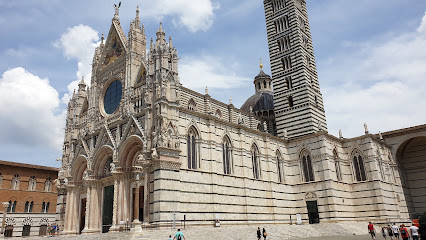
Fortezza Medicea
Uncover the rich history and stunning architecture of Fortezza Medicea, a must-visit fortress in Siena, Italy, offering breathtaking views and cultural experiences.
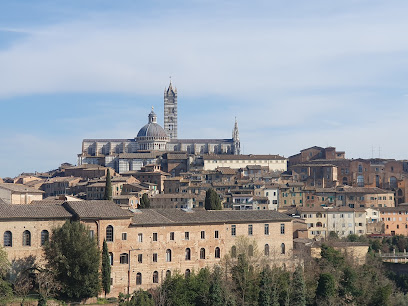
Basilica Cateriniana San Domenico
Explore the Basilica Cateriniana San Domenico in Siena, a majestic Catholic church filled with history, art, and spiritual significance.

Porta Camollia
Discover Porta Camollia, the historic gateway to Siena, where medieval charm meets vibrant local culture amidst breathtaking architecture.
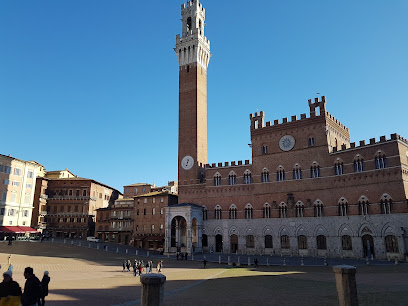
Piazza di Siena
Discover the serene beauty and historical charm of Piazza di Siena in Rome's enchanting Villa Borghese, a must-visit for every traveler.
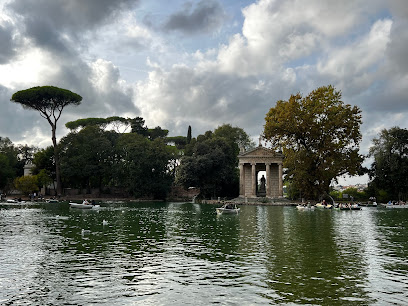
Porta Romana
Discover the architectural beauty and rich history of Porta Romana, a key landmark in Siena, Italy, inviting travelers to experience its medieval charm.
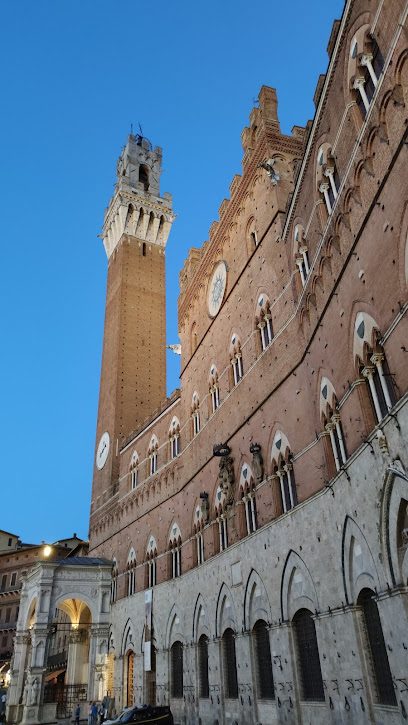
Palazzo Salimbeni
Explore the architectural beauty and historical significance of Palazzo Salimbeni, Siena's iconic Gothic landmark and home to the world's oldest bank.
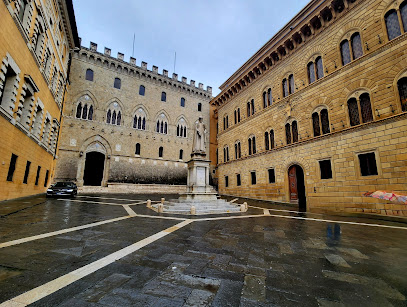
Fontebranda
Explore Fontebranda, a historical landmark in Siena, Italy, where ancient architecture meets serene beauty in a charming setting.

Palazzo Pubblico
Explore the architectural beauty and rich history of Palazzo Pubblico, a must-see landmark in the heart of Siena, Italy.
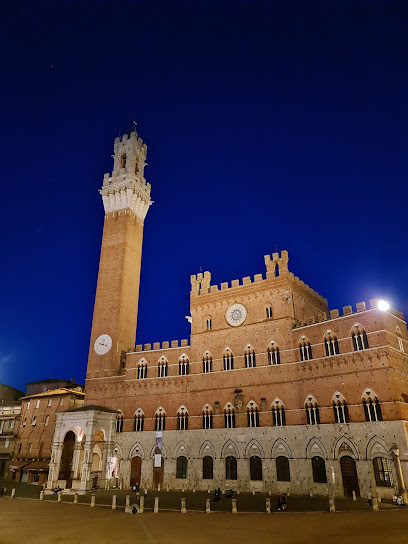
Santa Maria della Scala
Explore the rich cultural heritage of Siena at Santa Maria della Scala, a historic museum filled with art, history, and architectural marvels.
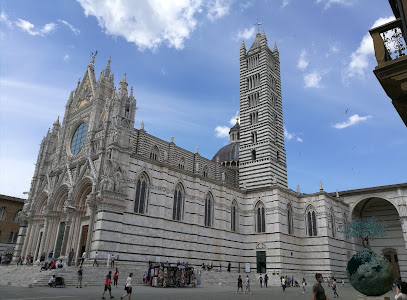
Basilica of San Francesco
Explore the Basilica of San Francesco in Siena, a stunning Gothic masterpiece blending spirituality and art in Italy's historic heart.
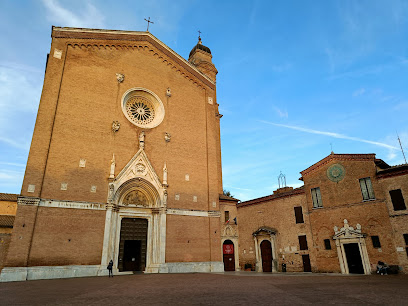
Santuario Casa di Santa Caterina
Explore the Sanctuary of Saint Catherine in Siena, a beautiful shrine filled with art, history, and spiritual significance, perfect for contemplation.
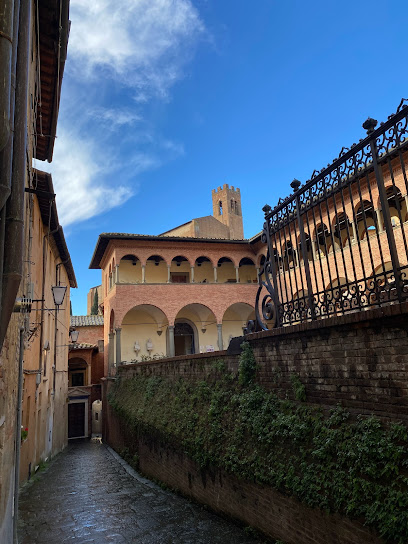
Porta Ovile
Discover Porta Ovile, a historic gateway in Siena that embodies the beauty of medieval architecture and the vibrant culture of Tuscany.
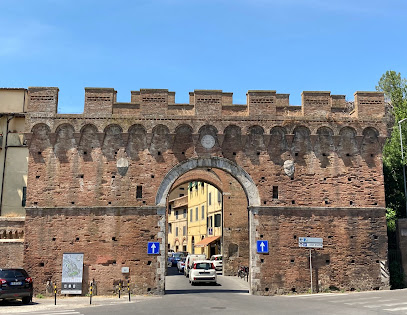
Parco Sculture del Chianti
Explore the breathtaking Parco Sculture del Chianti, where contemporary art meets nature in a stunning outdoor museum experience.
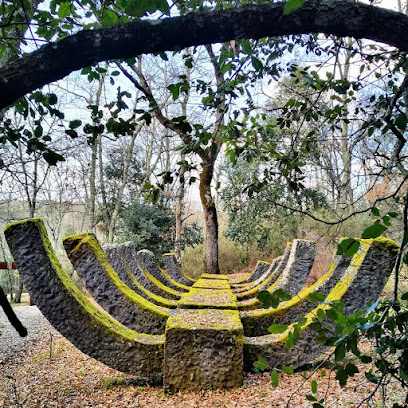
Opera delle Metropolitana
Explore the rich artistic heritage at Opera delle Metropolitana in Siena, showcasing exquisite religious art in a stunning historic setting.
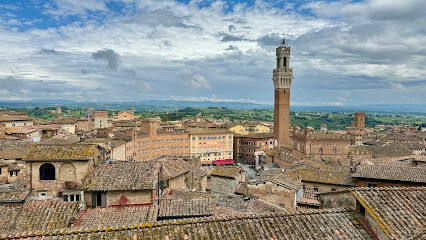
Unmissable attractions to see
Piazza del Campo
Discover the historical charm of Piazza del Campo, a stunning medieval square in Siena, Italy, featuring iconic architecture and vibrant local culture.
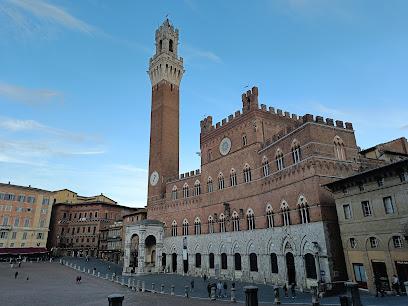
Siena Cathedral
Explore the stunning Siena Cathedral, a Gothic architectural gem in the heart of Tuscany, adorned with exquisite art and breathtaking mosaics.
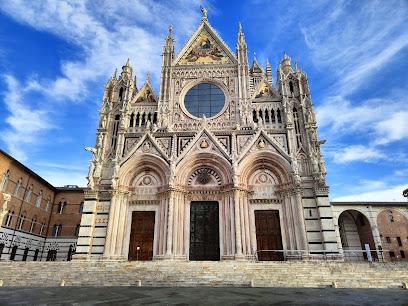
Boboli Gardens
Explore the enchanting Boboli Gardens in Florence, a majestic blend of nature, art, and history amidst the city's vibrant culture.
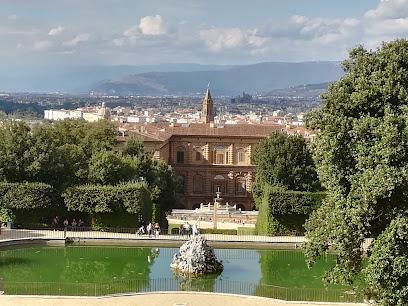
San Galgano Abbey
Discover the enchanting ruins of San Galgano Abbey, a historic masterpiece surrounded by the breathtaking beauty of the Tuscan countryside.
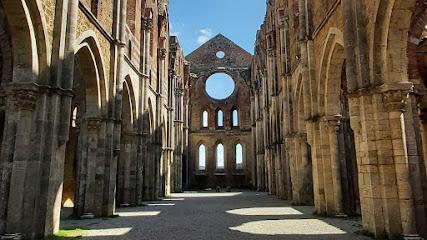
Fortezza Medicea
Discover the historic Fortezza Medicea in Siena, a monumental fortress with stunning views and rich cultural experiences in the heart of Tuscany.
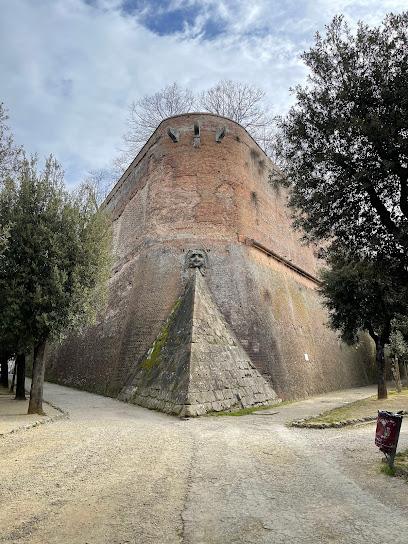
Fortezza Medicea
Discover the rich history and stunning views at Fortezza Medicea, a Renaissance fortress in the heart of Siena, Tuscany.
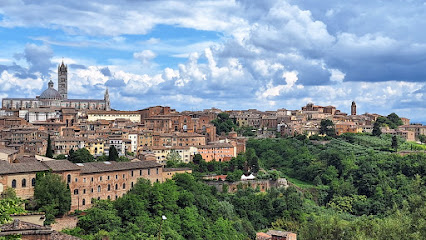
Terme San Giovanni
Experience total relaxation at Terme San Giovanni, a Tuscan wellness retreat with rejuvenating thermal baths and luxurious spa treatments.
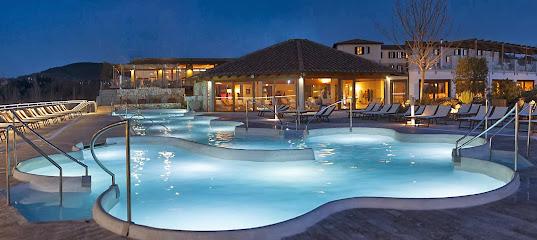
Basilica di San Miniato
Discover the serene beauty and rich history of Basilica di San Miniato, a must-see abbey in Florence that offers breathtaking views and artistic treasures.
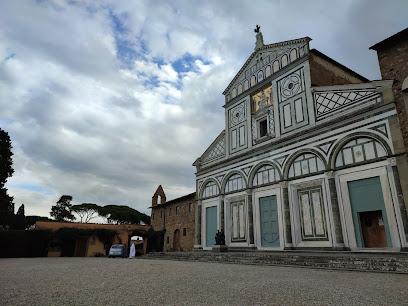
Abbazia di Sant'Antimo
Discover the tranquil beauty and rich history of Abbazia di Sant'Antimo, a stunning Romanesque abbey nestled in the heart of Tuscany.
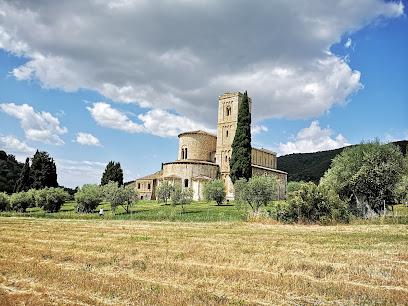
Abbazia di Monte Oliveto Maggiore
Discover the tranquil beauty and rich history of Monte Oliveto Maggiore, a stunning abbey in Tuscany renowned for its frescoes and serene landscapes.
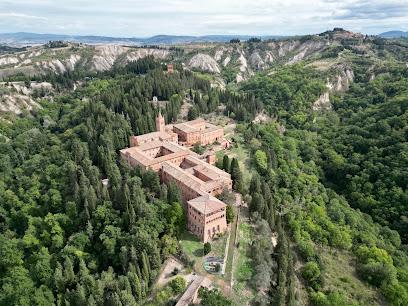
Giardino delle Rose
Discover the serene beauty of Giardino delle Rose in Florence, a stunning floral retreat with breathtaking views and rich history.
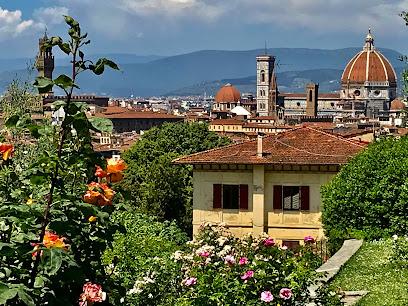
Basilica Cateriniana San Domenico
Discover the serenity and beauty of Basilica Cateriniana San Domenico, a Gothic gem in the heart of Siena, rich in art and spiritual heritage.
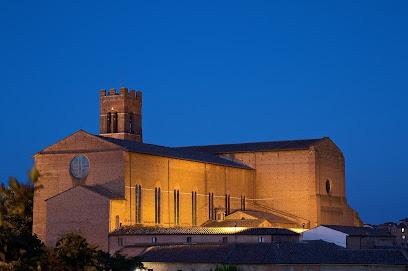
Roman Theatre
Explore the Roman Theatre in Volterra, a stunning archaeological site showcasing ancient Roman architecture and breathtaking views of Tuscany.
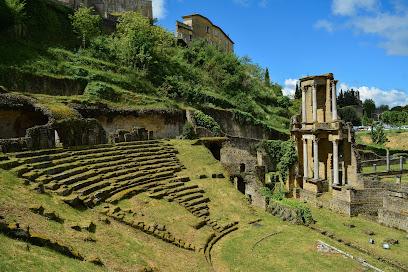
Chapel Vitaleta
Discover the tranquil beauty of Chapel Vitaleta, a stunning architectural gem in Tuscany's picturesque landscape, perfect for reflection and photography.
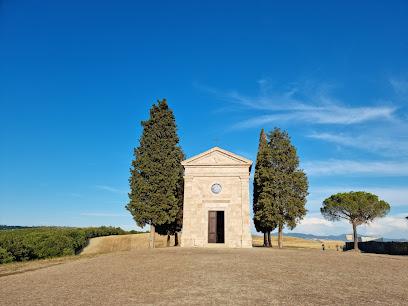
Fortress of Montalcino
Experience the rich history and breathtaking views at the enchanting Fortress of Montalcino in the heart of Tuscany, Italy.
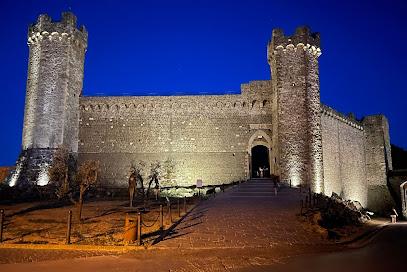
Essential places to dine
Antica Trattoria Papei
Experience the heart of Tuscany at Antica Trattoria Papei – where authentic Italian flavors come alive in every dish.
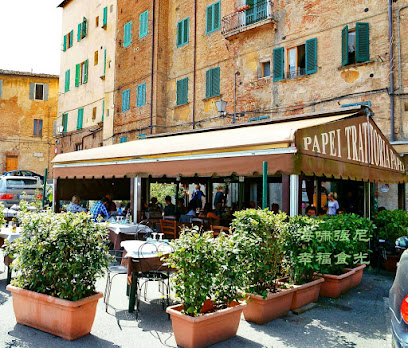
Osteria Permalico
Discover authentic Tuscan flavors at Osteria Permalico in Siena - a culinary gem serving traditional dishes with love.
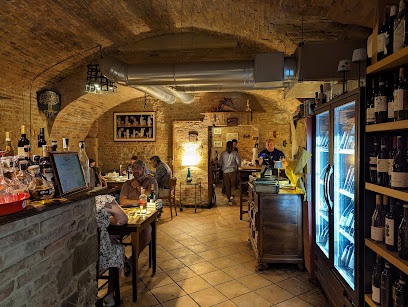
La Taverna di San Giuseppe
Experience authentic Tuscan cuisine at La Taverna di San Giuseppe in Siena - where every dish tells a story.
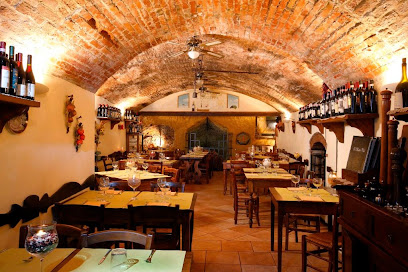
Osteria La Sosta di Violante
Discover authentic Tuscan flavors at Osteria La Sosta di Violante in Siena, where traditional recipes meet local ingredients for an unforgettable dining experience.
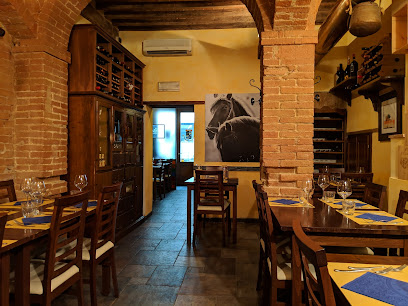
Osteria il Vinaio
Discover authentic Italian flavors at Osteria il Vinaio in Siena – where tradition meets taste in every dish.
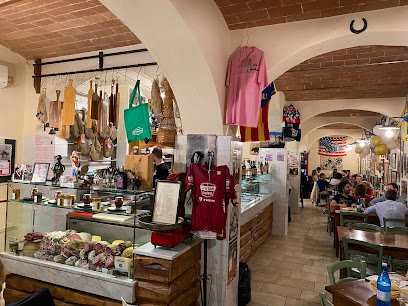
Grotta Santa Caterina da Bagoga
Discover authentic Italian cuisine at Grotta Santa Caterina da Bagoga in Siena - a culinary haven nestled in a serene alley.
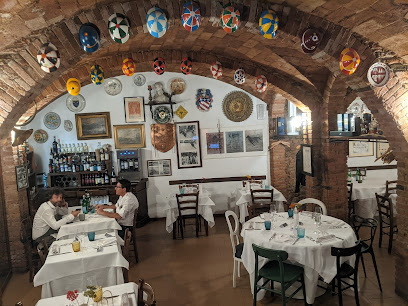
Osteria degli Svitati
Experience authentic Tuscan flavors at Osteria degli Svitati in Siena – where every meal tells a story of tradition and passion.
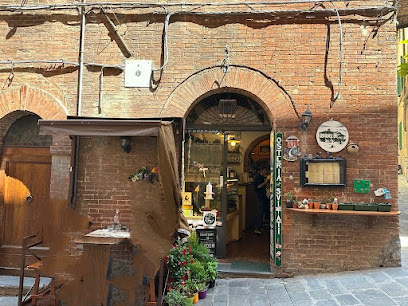
Osteria Il Carroccio
Experience authentic Tuscan cuisine at Osteria Il Carroccio in Siena - where tradition meets flavor in every dish.
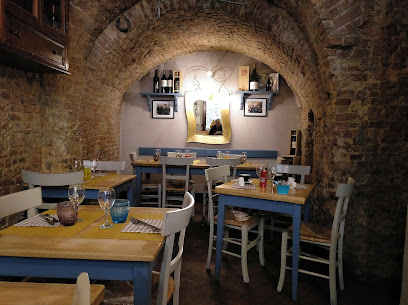
Osteria Cice
Discover authentic Italian flavors at Osteria Cice in Siena – where tradition meets taste in every dish.
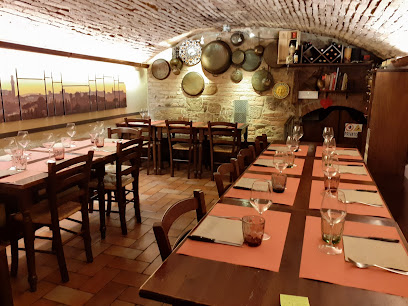
Osteria da Divo
Experience authentic Tuscan cuisine at Osteria da Divo in Siena - where every dish tells a story of tradition and flavor.
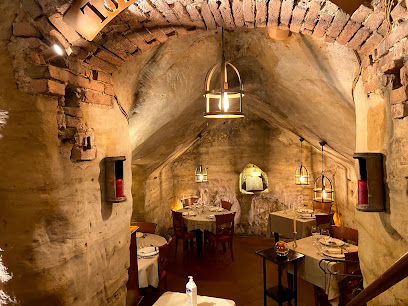
Il Bargello
Discover Il Bargello: A Tuscan culinary treasure offering exquisite Italian dishes and a cozy atmosphere in historic Siena.
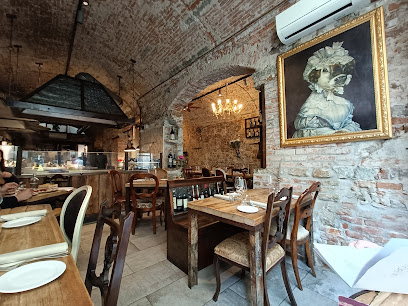
Osteria Nonna Gina
Discover authentic Tuscan flavors at Osteria Nonna Gina – a must-visit dining destination in Siena.
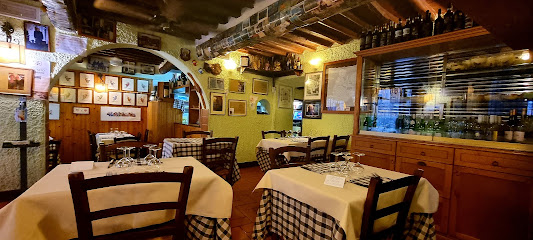
Ristorante Taverna Di Cecco
Experience authentic Tuscan flavors at Ristorante Taverna Di Cecco in Siena – where tradition meets exquisite dining.
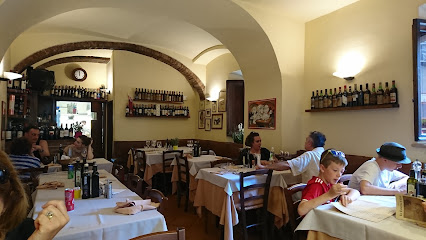
Boccon del Prete
Discover authentic Tuscan flavors at Boccon del Prete in the heart of Siena - a culinary experience you won't forget.
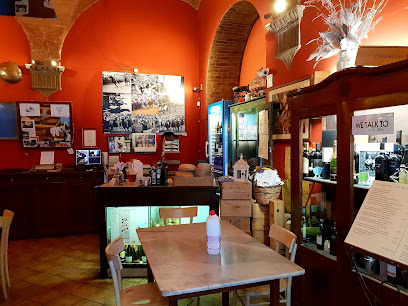
Osteria Il Grattacielo dal 1840
Discover authentic Tuscan flavors at Osteria Il Grattacielo dal 1840 in Siena—where tradition meets culinary excellence.
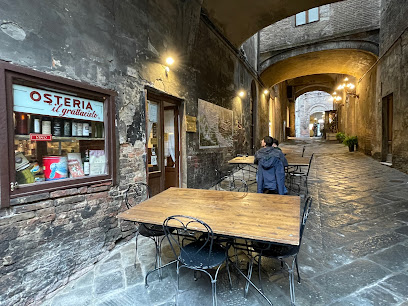
Markets, malls and hidden boutiques
Galleria PortaSiena
Discover the vibrant shopping experience at Galleria PortaSiena, where modern retail meets the charm of traditional Siena.
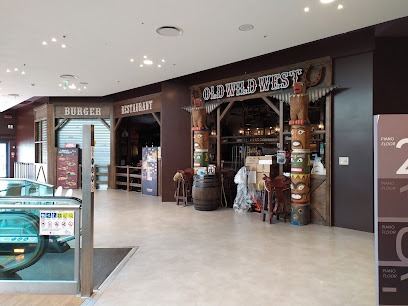
Flying Tiger Copenhagen
Explore the whimsical world of Flying Tiger Copenhagen in Siena, where unique gifts and charming home goods await every traveler.
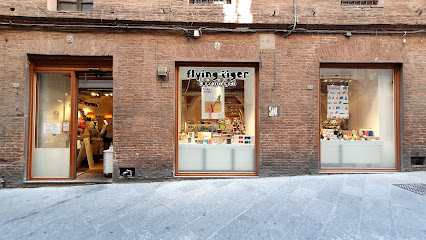
Centopercento Camicie Siena by Daniela Caruso
Discover exquisite custom tailoring and fashion accessories at Centopercento Camicie in the heart of Siena, where quality meets elegance.
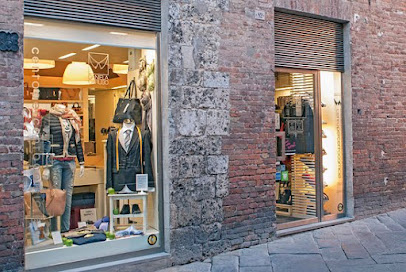
Casa della Pelle
Explore the artistry of handmade leather goods at Casa della Pelle, Siena's premier destination for exquisite bags and accessories.
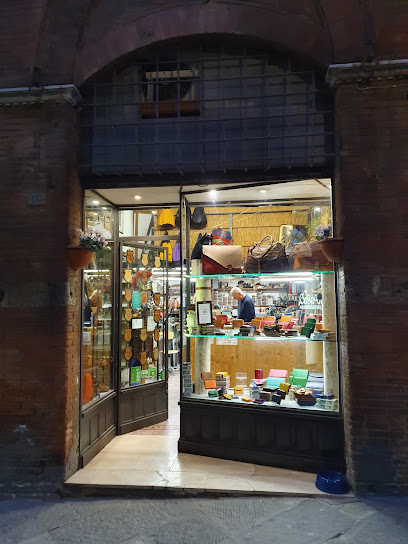
Antica Drogheria Manganelli 1879
Experience authentic Italian flavors at Antica Drogheria Manganelli, a historic grocery store in Siena offering a delightful selection of local products.
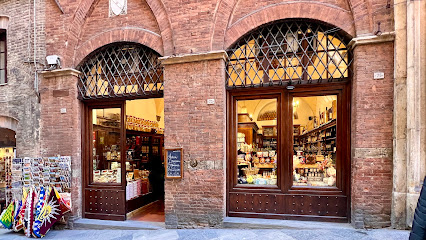
Urban Outlet - designer fashion and obvious in Siena!
Explore Urban Outlet in Siena for exclusive designer fashion deals on clothing for men, women, and children, in a vibrant shopping atmosphere.
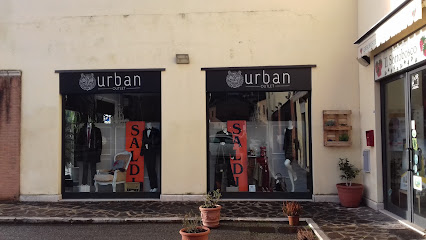
Il Negozino di Di Gaetano Emanuela
Explore unique body art and novelty items at Il Negozino di Di Gaetano Emanuela, Siena's premier body piercing and tattoo shop.
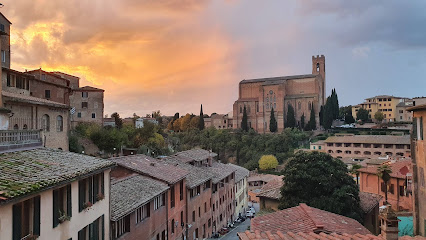
La Fabbrica delle Candele
Discover the art of candle making and explore exquisite handcrafted candles at La Fabbrica delle Candele in Siena, Italy.
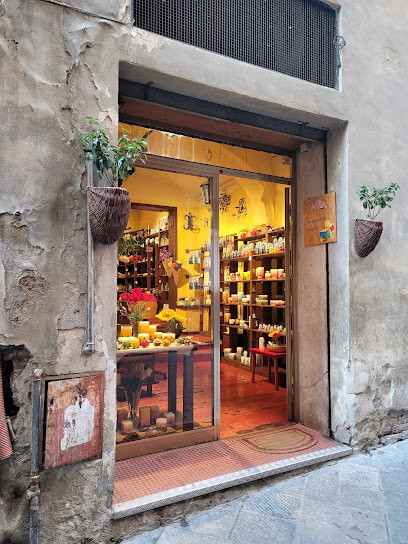
Aloe&Wolf
Explore Aloe&Wolf, Siena's premier vintage clothing store, offering unique pieces that blend timeless fashion with modern aesthetics.
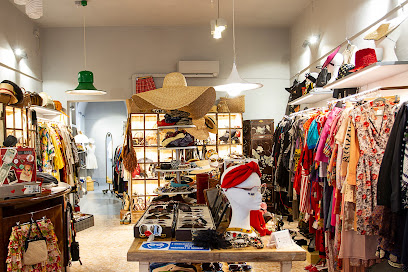
Momi Cappelli & Accessori Siena
Explore Momi Cappelli & Accessori in Siena for exquisite fashion accessories that reflect Italian elegance and craftsmanship.

Dixie
Discover elegant women's fashion at Dixie, a stylish clothing store in the heart of Siena, offering a curated selection of dresses and casual wear.
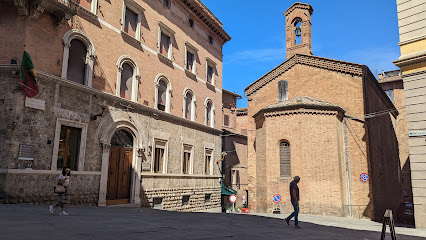
Franchi - abbigliamento e accessori
Explore Franchi in Siena for an exquisite selection of clothing, handbags, and shoes that blend contemporary style with Italian elegance.
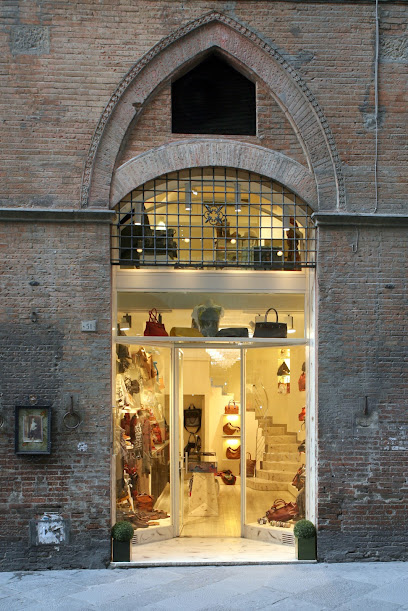
Ceramiche Antica Siena By Martini Marisa
Explore the charm of traditional Italian craftsmanship at Ceramiche Antica Siena, showcasing exquisite handcrafted pottery and unique gifts.

Cortecci 1935 Siena
Discover Cortecci 1935 in Siena: Where Italian fashion meets timeless elegance, offering unique clothing and accessories for discerning tourists.
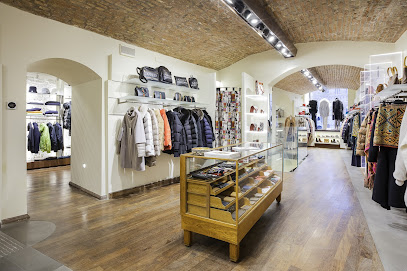
L' Atelier
Explore the charm of vintage finds and exquisite antiques at L' Atelier, Siena's hidden gem for thrift store lovers.
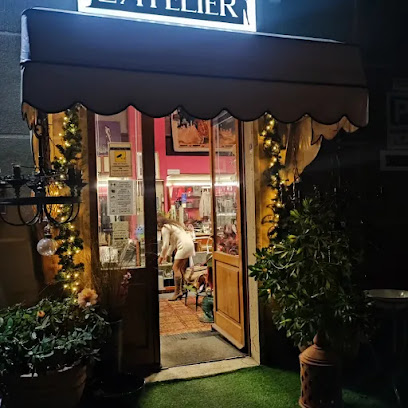
Essential bars & hidden hideouts
Bar Impero Siena
Discover the heart of Siena at Bar Impero, where Italian café tradition meets modern charm in a delightful atmosphere.
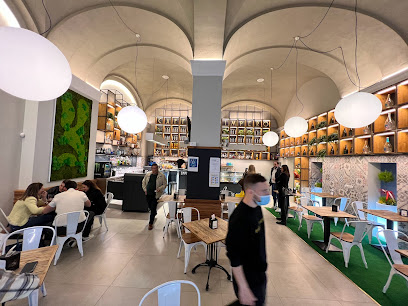
San Paolo Pub
Experience the vibrant nightlife of Siena at San Paolo Pub, where great food and a wide selection of beers await in a charming atmosphere.
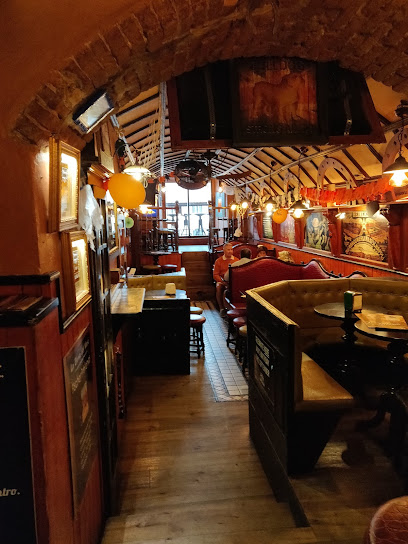
Bar Il Palio
Discover authentic Italian cuisine and vibrant ambiance at Bar Il Palio, a quintessential spot in the heart of Siena's historic Il Campo.
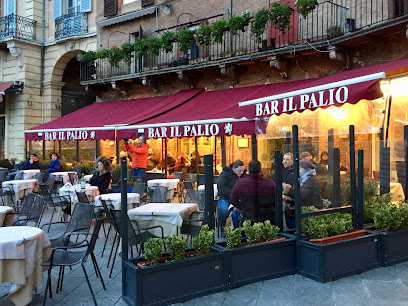
BLANDIS - Wine & Cafè
Discover the perfect blend of coffee, wine, and sandwiches at BLANDIS - Wine & Cafè, a charming retreat in Siena's historic center.

Vineria Tirabusciò Siena
Experience the essence of Tuscany at Vineria Tirabusciò in Siena, where exquisite wines meet delightful culinary creations.
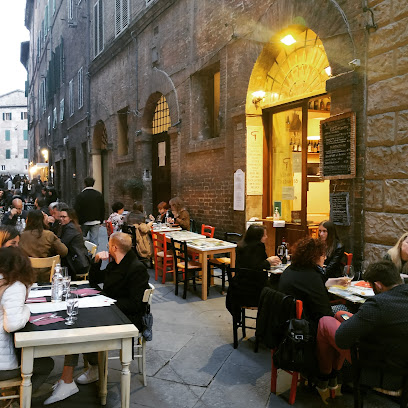
Trefilari Wine Bar
Experience the heart of Tuscany at Trefilari Wine Bar, where exquisite wines and authentic Tuscan cuisine create unforgettable moments.
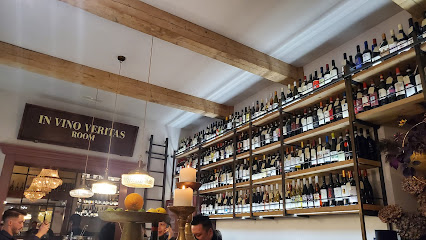
i parolai tapas bar
Discover the vibrant culinary scene of Siena at i Parolai, where delicious tapas and a welcoming atmosphere await you.
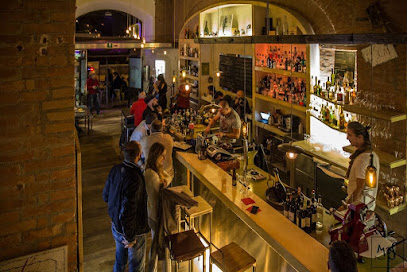
Maudit Pub
Experience the vibrant atmosphere and delicious offerings at Maudit Pub, Siena's go-to spot for craft beers and gourmet burgers.
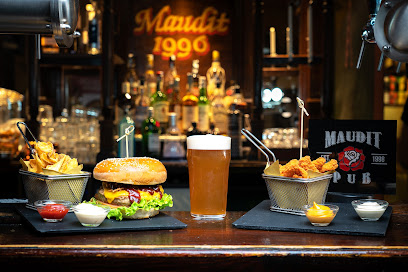
Key Largo Bar
Experience the vibrant atmosphere and local flavors at Key Largo Bar in Siena, a perfect spot for relaxation and socializing.
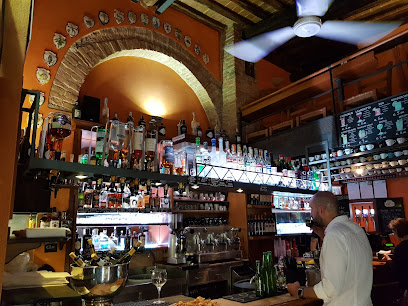
Skilė MUSIC PUB
Discover Siena's nightlife at Skilė MUSIC PUB, where delicious sandwiches meet great music in a vibrant pub atmosphere.
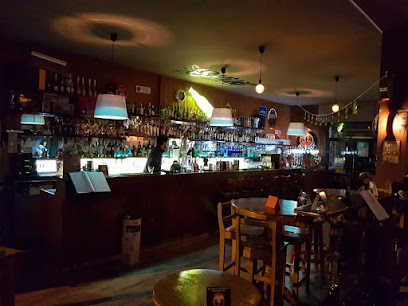
Charlie Mixology Bar di Aldinucci Riccardo
Discover the vibrant mixology scene at Charlie Mixology Bar, where exquisite cocktails blend with a chic atmosphere in the heart of Siena.
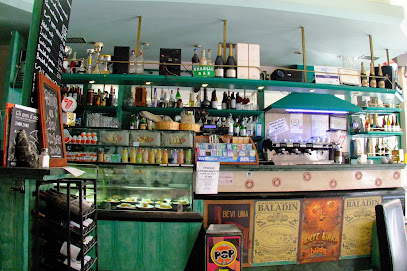
Caffè Le Logge
Explore the vibrant cocktail scene in Siena at Caffè Le Logge, where exquisite drinks and a cozy atmosphere await.
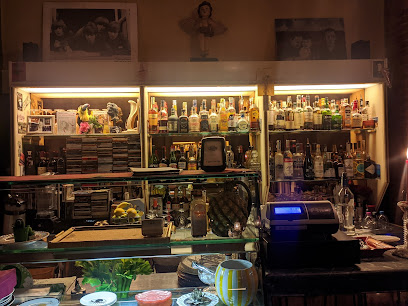
Antico Bar La Lizza
Discover the charm of Antico Bar La Lizza in Siena, where authentic Italian coffee and pastries meet vibrant local culture.
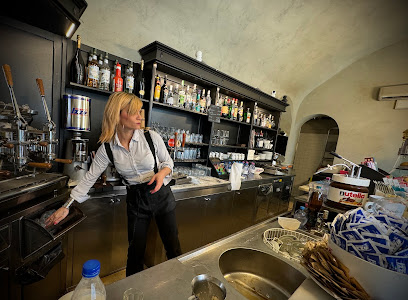
Bar TERMINI
Experience the charm of Siena at Bar TERMINI, where authentic Italian flavors and a cozy atmosphere await every visitor.
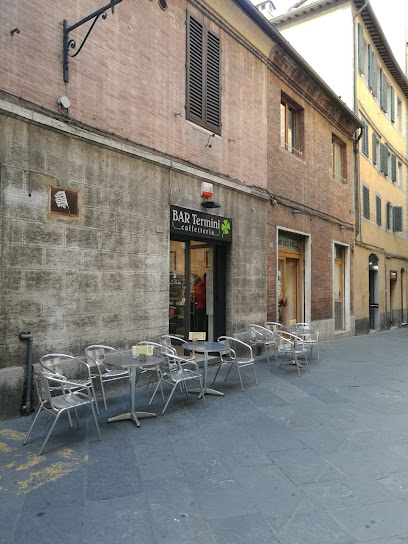
Non Solo Bar siena
Discover the flavors of Siena at Non Solo Bar, a delightful bistro offering pizzas, sandwiches, and more in a cozy setting.
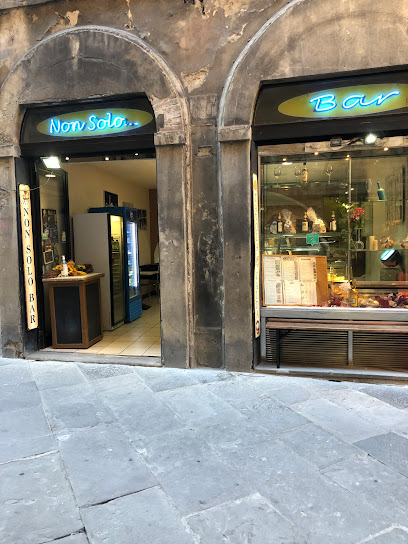
Travel experiences inspired by this city
Explore more travel diariesLocal Phrases
-
- HelloCiao
[chow] - GoodbyeArrivederci
[ah-ree-veh-dehr-chee] - YesSì
[see] - NoNo
[noh] - Please/You're welcomePer favore
[pehr fah-voh-reh] - Thank youGrazie
[gra-tsyeh] - Excuse me/SorryScusa
[skoo-sah] - How are you?Come stai?
[koh-meh stai] - Fine. And you?Bene. E tu?
[beh-neh. eh too] - Do you speak English?Parli inglese?
[pahr-lee een-gleh-zeh] - I don't understandNon capisco
[nohn kah-pee-skoh]
- HelloCiao
-
- I'd like to see the menu, pleaseVorrei vedere il menù, per favore
[vohr-ray veh-deh-reh eel meh-noo pehr fah-voh-reh] - I don't eat meatNon mangio carne
[nohn mahn-joh kahr-neh] - Cheers!Salute!
[sah-loo-teh] - I would like to pay, pleaseVorrei pagare, per favore
[vohr-ray pah-gah-reh pehr fah-voh-reh]
- I'd like to see the menu, pleaseVorrei vedere il menù, per favore
-
- Help!Aiuto!
[ah-yoo-toh] - Go away!Vai via!
[vai vee-ah] - Call the Police!Chiama la polizia!
[kyah-mah lah poh-lee-tsyah] - Call a doctor!Chiama un dottore!
[kyah-mah oon doh-toh-reh] - I'm lostMi sono perso
[mee soh-no pehr-soh] - I'm illSto male
[stoh mah-leh]
- Help!Aiuto!
-
- I'd like to buy...Vorrei comprare...
[vohr-ray kohm-prah-reh] - I'm just lookingSto solo guardando
[stoh soh-loh gwahr-dahn-doh] - How much is it?Quanto costa?
[kwahn-toh kohs-tah] - That's too expensiveÈ troppo caro
[eh troh-poh kah-roh] - Can you lower the price?Puoi abbassare il prezzo?
[pwoh-ee ahb-bahs-sah-reh eel preh-tsoh]
- I'd like to buy...Vorrei comprare...
-
- What time is it?Che ora è?
[keh oh-rah eh] - It's one o'clockÈ l'una
[eh loo-nah] - Half past (10)Le dieci e mezza
[leh dyeh-chee eh meh-tzah] - MorningMattina
[maht-tee-nah] - AfternoonPomeriggio
[poh-meh-ree-joh] - EveningSera
[seh-rah] - YesterdayIeri
[yeh-ree] - TodayOggi
[oh-jee] - TomorrowDomani
[doh-mah-nee] - 1Uno
[oo-no] - 2Due
[doo-eh] - 3Tre
[treh] - 4Quattro
[kwah-troh] - 5Cinque
[cheen-kweh] - 6Sei
[say] - 7Sette
[set-teh] - 8Otto
[oh-toh] - 9Nove
[noh-veh] - 10Dieci
[dyeh-chee]
- What time is it?Che ora è?
-
- Where's a/the...?Dov'è...?
[doh-veh] - What's the address?Qual è l'indirizzo?
[kwal eh leen-dee-reet-soh] - Can you show me (on the map)?Puoi mostrarmi (nella mappa)?
[pwoh-ee mohs-tahr-mee neh-lah mahp-pah] - When's the next (bus)?Quando passa il prossimo (autobus)?
[kwahn-doh pahs-sah eel prohs-see-moh ow-toh-boo-s] - A ticket (to ....)Un biglietto (per ...)
[oon beel-lyeh-toh pehr]
- Where's a/the...?Dov'è...?
History of Siena
-
According to legend, Siena was founded by Senius and Aschius, sons of Remus, one of the founders of Rome. They fled Rome after their father's murder and brought with them the statue of the she-wolf suckling Romulus and Remus, which became an emblem of the city. Historically, Siena was likely established by the Etruscans and later developed as a Roman colony.
-
During the 12th and 13th centuries, Siena emerged as a wealthy and powerful city-state. Its prosperity was largely due to its strategic position on the Via Francigena, an important medieval pilgrimage route. The city was governed by the Sienese Republic, a form of autonomous government that allowed it to flourish economically and culturally.
-
On September 4, 1260, the Battle of Montaperti took place between the Sienese Ghibellines and the Florentine Guelphs. The Sienese achieved a decisive victory, which is celebrated as a high point in the city's history. This battle ensured Siena's independence and reinforced its rivalry with Florence.
-
The Siena Cathedral, or Duomo di Siena, is a masterpiece of Italian Romanesque-Gothic architecture. Construction began in the 12th century and continued for several hundred years. The cathedral is renowned for its stunning facade, intricate marble floors, and the Piccolomini Library frescoes. It stands as a testament to the city's artistic and architectural achievements.
-
In 1348, the Black Death struck Siena, leading to a dramatic population decline and economic downturn. The city lost a significant portion of its inhabitants, which halted many of its ambitious architectural projects, including the expansion of the cathedral. Despite these challenges, Siena's artistic and cultural legacy continued to thrive.
-
The Palio di Siena is a historic horse race held twice a year in the Piazza del Campo. This tradition dates back to the Middle Ages and is a vibrant expression of Sienese culture. Each race features ten horses and riders representing different city districts, or contrade. The Palio is not just a race but a deeply ingrained cultural event that showcases the city's communal spirit and historical rivalries.
-
In 1555, after a prolonged siege, Siena was conquered by the Spanish and subsequently handed over to the Grand Duchy of Tuscany under Medici rule. This marked the end of the Sienese Republic. Although Siena lost its political independence, it retained its rich cultural and artistic heritage.
-
Despite political changes, Siena remained a significant cultural center during the Renaissance. Artists like Duccio di Buoninsegna and Ambrogio Lorenzetti left an indelible mark on the city with their works, particularly in the field of painting. The Siena School of painting is noted for its vibrant colors and detailed compositions, contributing to the city's enduring artistic legacy.
Siena Essentials
-
Siena is located in the Tuscany region of Italy. The nearest major airport is Florence Airport (Amerigo Vespucci), approximately 85 kilometers away. From Florence, you can take a bus or train to Siena, with buses typically being the more direct option. Alternatively, Pisa International Airport is about 120 kilometers away and offers additional flight options. From Pisa, you can take a train to Siena, usually requiring a transfer in Florence. Car rentals are also available at both airports for those who prefer to drive.
-
Siena itself is best explored on foot, especially the historic city center which is a pedestrian-only zone. For longer distances within the city, local buses operated by Tiemme are reliable and cover most areas. Taxi services are available but can be expensive. If you're planning to explore the Tuscan countryside, renting a car is a convenient option, but be mindful of the ZTL (Zona a Traffico Limitato) zones in the city where car access is restricted.
-
The official currency in Italy is the Euro (€). Credit and debit cards are widely accepted in hotels, restaurants, and larger shops. However, it's advisable to carry some cash for smaller establishments, local markets, and public transportation. ATMs are plentiful throughout Siena, and you can withdraw cash as needed.
-
Siena is generally a safe city for tourists. However, like any popular destination, be cautious of pickpockets, especially in crowded areas like Piazza del Campo and during events such as the Palio horse race. Avoid poorly lit areas at night and always keep an eye on your belongings. There are no specific high-crime neighborhoods targeting tourists, but staying vigilant is always wise.
-
In case of emergency, dial 112 for immediate assistance, which is the European emergency number. Siena has several medical facilities, including the Policlinico Santa Maria alle Scotte, which is the main hospital. Pharmacies are readily available for minor health issues and over-the-counter medications. It's also recommended to have travel insurance that covers medical emergencies.
-
Fashion: Do dress smartly and modestly, especially when visiting religious sites. Avoid overly casual or revealing clothing. Religion: Do respect local customs and traditions. Always cover your shoulders and knees when entering churches. Public Transport: Do validate your bus ticket before boarding. Don’t eat or drink on public transport. Greetings: Do greet people with a 'Buongiorno' (Good morning) or 'Buonasera' (Good evening). A handshake is common. Eating & Drinking: Do try local dishes like ribollita and pici pasta. Don’t rush your meals; Italians appreciate leisurely dining.
-
To experience Siena like a local, visit the Contrada museums to learn about the city's unique district culture, especially during the Palio. Take a stroll around the weekly market at La Lizza on Wednesdays where locals buy fresh produce and goods. Enjoy a glass of local Chianti wine at a small enoteca (wine bar) and engage with the friendly locals. Wander through the lesser-known streets and alleys to discover hidden gems and authentic trattorias.
Trending Landmark in Siena
-
Duomo di Siena
-
Fortezza Medicea
-
Basilica Cateriniana San Domenico
-
Porta Camollia
-
Piazza di Siena
-
Porta Romana
-
Palazzo Salimbeni
-
Fontebranda
-
Palazzo Pubblico
-
Santa Maria della Scala
-
Basilica of San Francesco
-
Santuario Casa di Santa Caterina
-
Porta Ovile
-
Parco Sculture del Chianti
-
Opera delle Metropolitana
Nearby Cities to Siena
-
Things To Do in San Gimignano
-
Things To Do in Montepulciano
-
Things To Do in Arezzo
-
Things To Do in Florence
-
Things To Do in Pisa
-
Things To Do in Lucca
-
Things To Do in Perugia
-
Things To Do in Orvieto
-
Things To Do in Assisi
-
Things To Do in Chiesanuova
-
Things To Do in Acquaviva
-
Things To Do in Fiorentino
-
Things To Do in San Marino
-
Things To Do in Montegiardino
-
Things To Do in Urbino









